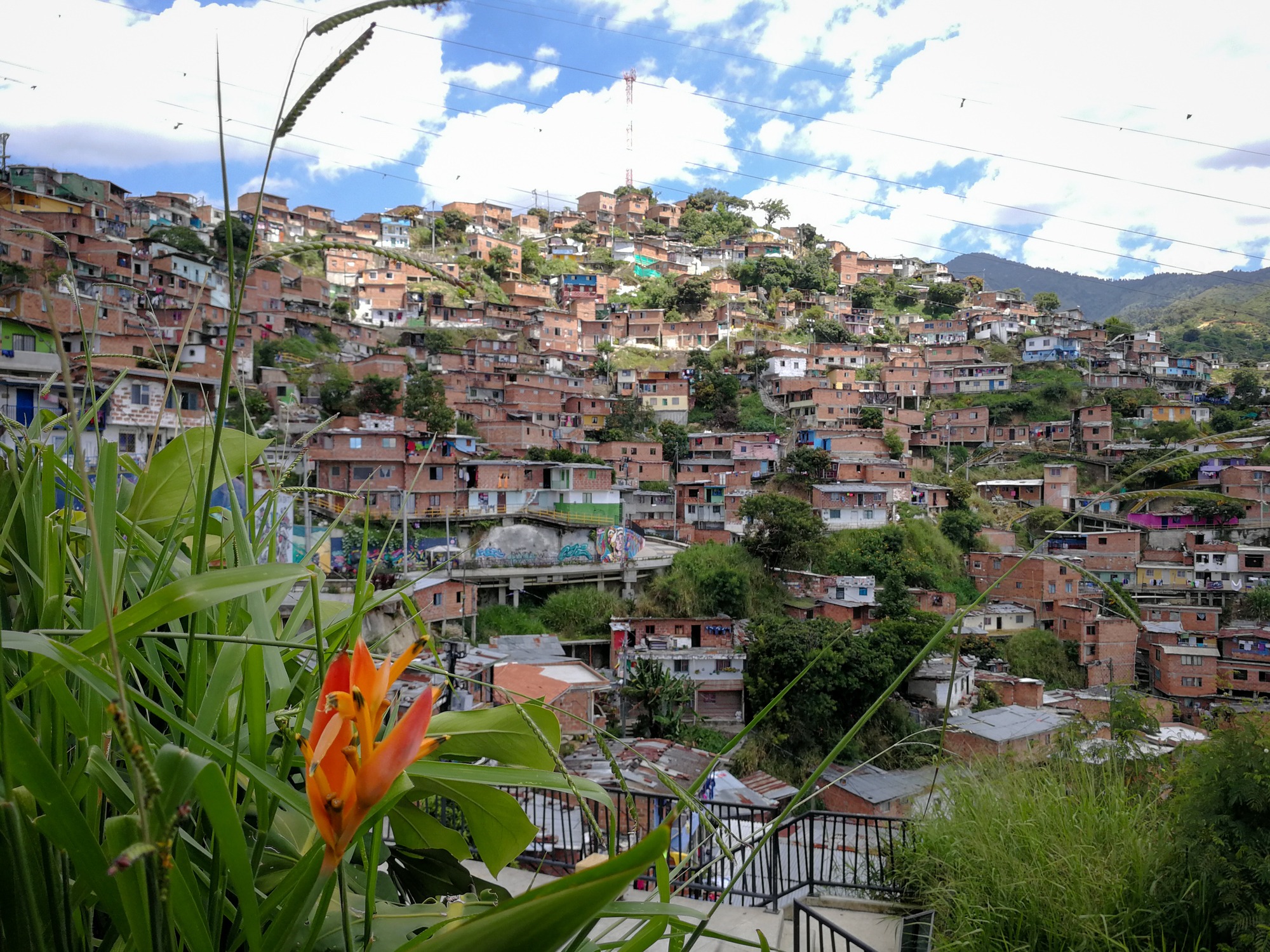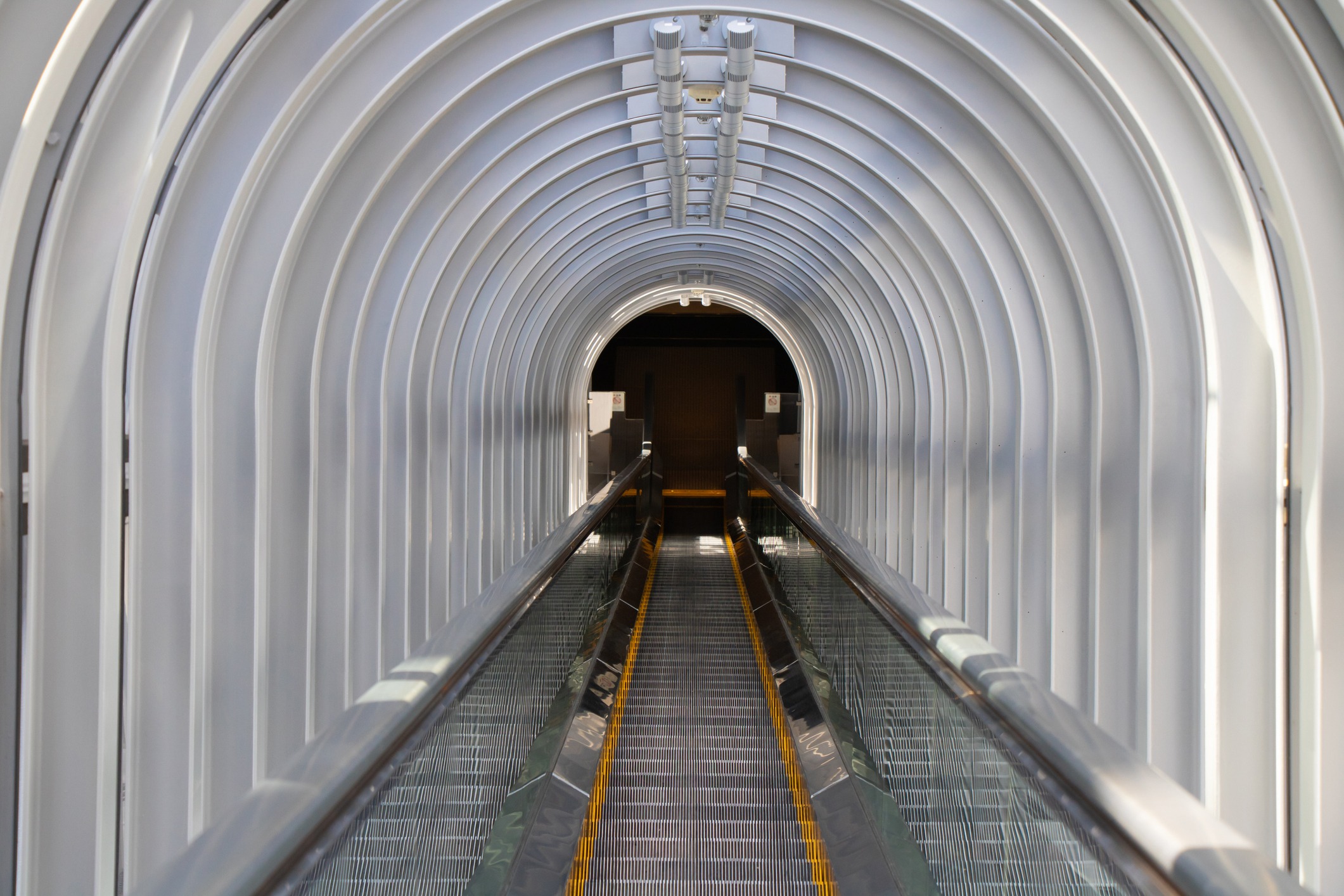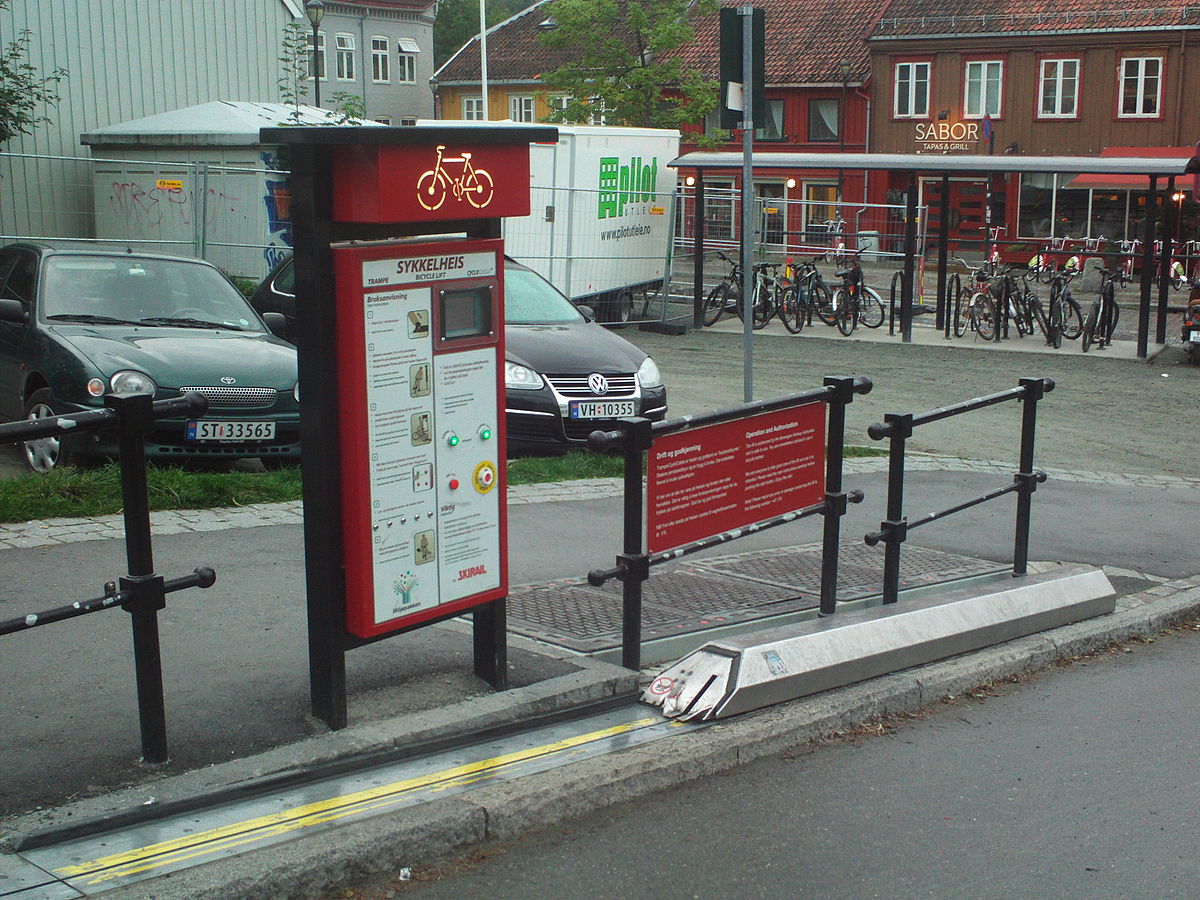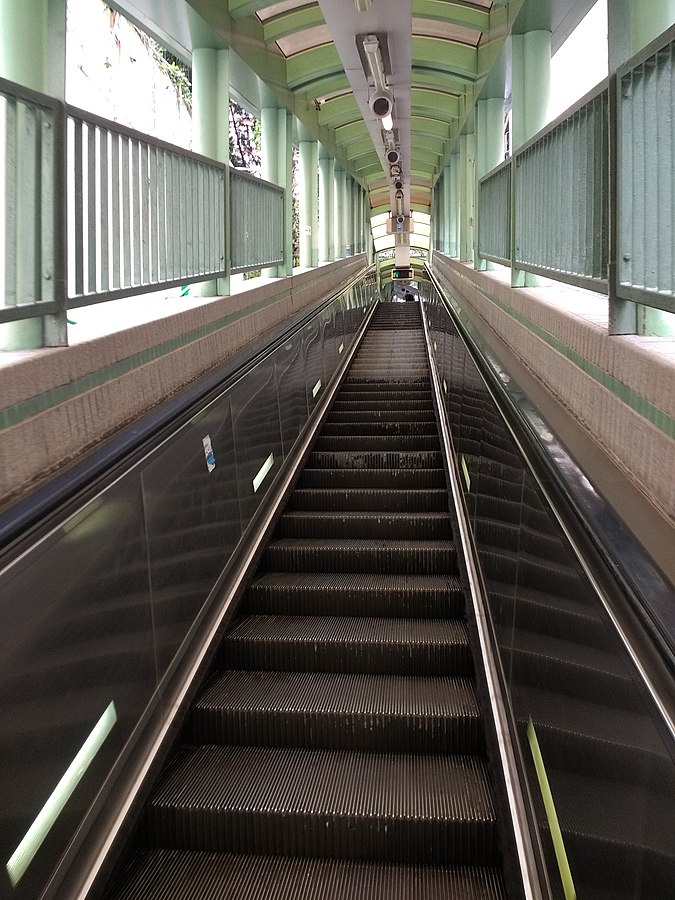Have you ever thought about escalators as more than just a convenient way to move between floors? Let’s shift our perspective and see these mechanical marvels in a new light!
Far from being mundane, some escalators around the world are feats of engineering and design, offering not just a ride but an experience. These aren’t your typical run-of-the-mill escalators; they are extraordinary examples of how functionality can intertwine with creativity. From stunning architectural designs to unique locations, these escalators turn a simple act of moving between levels into a fascinating journey. So, let’s step onto some of the world’s most intriguing escalators, where each ride promises a little extra fun and a lot of interesting stories.
Atomium (Brussels, Belgium)
The Atomium in Brussels, Belgium, stands as a dazzling testament to both art and science. It was originally constructed for the 1958 Brussels World Fair and is now one of the country’s most iconic tourist attractions. This remarkable structure is designed to represent a magnified unit cell of an iron crystal, showcasing an intersection of scientific concepts and architectural grandeur.
While its unique exterior never fails to amaze, the interior of the Atomium is equally fascinating. The metal tubes that connect its spheres double as passageways, housing the original escalators. Among these, one particular escalator, stretching just under 115 feet, held the record for being the longest in Europe at the time of its construction.
The futuristic design of these escalators perfectly complements the scientific inspiration behind the Atomium, adding to the immersive, space-age experience as visitors ascend and descend through its atomic-inspired structure.
The Caesar’s Palace (Las Vegas, Nevada, USA)
The Forum Shops at Caesar’s Palace in Las Vegas, Nevada, are home to a remarkable architectural feature that stands out even in a city known for its extravagance: a stunning spiral escalator. While there are several spiral escalators around the world, the one at Caesar’s Palace is particularly noteworthy for its elegance and beauty. This impressive structure was installed in 1985 by Mitsubishi Electric, a division of the renowned Mitsubishi company in Japan, known for its cutting-edge technology and design.
The escalator’s graceful curves and sleek design not only enhance the luxurious ambiance of the Forum Shops but also represent a remarkable feat of engineering. It’s a perfect blend of form and function, adding a touch of sophistication to the already opulent setting of one of Las Vegas’s most iconic destinations. Visitors to the Forum Shops are often captivated by this unique escalator, which is as much a work of art as it is a practical mode of transportation.
Zollverein Coal Mine (Düsseldorf, Germany)
The Zollverein Coal Mine in Düsseldorf, Germany, holds the unique honor of being the only coal mine designated as a UNESCO World Heritage Site. This accolade is a testament to its significance as a prime example of Europe’s industrial revolution. The mine’s extensive network of mining infrastructure, coupled with its Bauhaus-style architecture, sets it apart from any other coal mine in Germany, marking it as a beacon of industrial heritage.
Though no longer operational, the Zollverein Coal Mine has been transformed into a dynamic tourist attraction. Among its most notable features are the escalators, renowned for being among the longest outdoor escalators of their kind. One particularly striking escalator leads visitors to a museum bathed in a captivating burnt orange light. This subtle yet powerful design choice not only adds a cool, contemporary edge but also serves as a poignant reminder of the warmth and energy that once emanated from the now-silent mines below.
Umeda Sky Building (Osaka, Japan)
The Umeda Sky Building in Osaka, Japan, is home to an extraordinary experience – the world’s highest escalator. This remarkable escalator stretches across a vast, atrium-like space, seemingly suspended in mid-air. It offers an exhilarating journey, perfect for those seeking a unique perspective of the city. As you ascend or descend, you’re treated to breathtaking views of Osaka’s sprawling urban landscape, a sight that’s particularly awe-inspiring for those unafraid of heights. The experience of riding this escalator is like floating above the city, a sensation that’s both thrilling and unforgettable.
However, accessing this architectural marvel comes with a price. To experience the Umeda Sky Building’s sky-high escalator, visitors are required to pay an entrance fee of 1500 yen (approximately US$14). While it might seem steep, the cost is a small price to pay for such a unique and memorable experience. The fee grants you access not only to the escalator but also to the building’s other attractions, making it a worthwhile investment for a day of exploration and stunning city views in one of Japan’s most vibrant metropolises.
Natural History Museum (London, England, United Kingdom)
The escalator in London’s renowned Natural History Museum offers more than just a passage between floors – it’s an enchanting journey that captivates the imagination. This architectural marvel, bridging the Earth Hall to the upper Red Zone galleries, takes visitors on a unique voyage through the heart of a striking metallic globe. As you ascend or descend on this escalator, you’re enveloped in an immersive experience that feels both magical and otherworldly.
The globe, symbolizing the planet Earth, adds a dramatic and educational element to the ride, making it a memorable part of any visit to the museum. This isn’t just a routine escalator trip; it’s a visual spectacle, transforming a simple transit into an extraordinary adventure and enhancing the museum’s mission to connect people with the natural world in an engaging and innovative way.
Toledo Station (Naples, Italy)
The escalator at Toledo Station in Naples, Italy, is nothing short of an artistic masterpiece, akin to a mesmerizing stairway descending into an underwater realm. This unique feature is fitting for Toledo, one of Naples’ deepest metro stations, and adds a touch of magic to the daily commute.
Toledo Station’s transformation into a stunning subterranean gallery is the result of Naples’ initiative to blend urban design with art. Catalan architect Oscar Tusquets Blanca took this ordinary subway station and reimagined it into an enchanting underwater-themed art exhibition. The escalators here take passengers 38 meters (124 feet) below sea level through an awe-inspiring seascape of vibrant mosaics. These mosaics shimmer and shift in hue under varying light effects, creating an ever-changing visual spectacle.
Above the escalators, a glittering LED-lit crater adds to the ambiance, while a small aperture at the top brings a stream of natural light from the town square far above. The result is a magical and immersive experience that transforms a routine journey into an extraordinary adventure, showcasing how public transport spaces can become captivating works of art.
Bicycle Escalators (Trondheim, Norway)
Bicycle escalators in Trondheim, Norway, are a brilliant testament to the city’s innovative approach to urban cycling. While the concept of bicycle escalators might seem futuristic or novel to many, in Trondheim, they are a practical and well-established solution to a unique challenge. The city, nestled on the slopes of the hill Brubakken, presents a daunting task for cyclists due to its steep inclines. To address this, Trondheim took a pioneering step in 1993 by installing what is known as bicycle lifts, becoming the world’s first city to introduce such a facility.
These bicycle escalators have since revolutionized the way locals navigate the hilly terrain. Effortlessly assisting over 200,000 cyclists in conquering the 130-meter ascent, the lifts have proved to be not just efficient but also remarkably safe, boasting an impeccable safety record with no accidents reported. This innovative infrastructure reflects Trondheim’s commitment to promoting sustainable transportation and cycling culture, making it easier and more accessible for people to choose bikes over cars. It’s a small yet significant reminder of how thoughtful urban planning can have a profound impact on everyday life.
The World’s Shortest Escalator (Kawasaki, Japan)
In the Okadaya Mores shopping mall in Kawasaki, Japan, you’ll find a rather curious record-holder: the world’s shortest escalator. This unique escalator, with just five steps, boasts a modest vertical rise of merely 32.8 inches (83 centimeters). While it might seem quirky or even amusing to some, this diminutive escalator has become somewhat of an attraction in its own right.
It’s a playful twist on what we typically expect from escalators, challenging the notion that bigger always means better. Though it may not save you a significant amount of time compared to taking the adjacent stairs, it certainly adds a bit of unexpected charm and whimsy to the shopping experience.
The World’s Longest Street Escalator (Hong Kong)
Hong Kong’s Central-Mid-Levels escalator system isn’t just a marvel of urban transportation; it holds the impressive title of being the world’s longest outdoor covered escalator. For those who revel in the unique experience of escalator rides, this extensive network is a true delight.
Spanning over 800 meters (2,264 feet), this escalator system offers both locals and tourists an extraordinary journey through the heart of the city. Imagine gliding through the bustling streets of Hong Kong, elevated above the crowd, on a ride that lasts about 20 minutes. This isn’t just a means of getting from point A to B; it’s an urban adventure, offering a unique vantage point to observe the city’s vibrant life.
The Central-Mid-Levels escalator has become an integral part of Hong Kong’s daily rhythm, weaving through commercial and residential districts and providing a fascinating glimpse into the city’s dynamic culture and architecture. This escalator is more than a feat of engineering – it’s a moving experience, quite literally, that encapsulates the spirit of Hong Kong.
Escalator in the Slums of Comuna 13 (Medellin, Colombia)

The installation of modern outdoor escalators in Comuna 13, a historically impoverished neighborhood in Medellín, Colombia, presents a striking juxtaposition of innovation amidst hardship. These escalators stand as a symbol of progress and hope in an area once defined by its challenging topography and socio-economic struggles.
Prior to the escalators’ installation, residents of Comuna 13 faced a daily endurance test, climbing a steep set of stairs equivalent in height to a 28-story building. This arduous journey, often taking about 35 minutes, was a part of the everyday struggle for those living in the hillside community. However, with the introduction of this incredible piece of machinery, what was once a tiresome trek has been transformed into a convenient five-minute ride.
The impact of this change extends beyond mere convenience; it signifies a significant improvement in the quality of life for the residents. This escalator system not only physically connects the community to the rest of the city but also symbolizes a bridge toward greater inclusion and urban development. It’s a powerful testament to how thoughtful urban planning can profoundly uplift a community, changing lives in both small and monumental ways.
Conclusion
From the dizzying heights of Hong Kong’s Central-Mid-Levels system to the transformative steps in Medellín’s Comuna 13, it’s clear that escalators can be much more than just convenient machines. They’re a testament to human ingenuity, blending functionality with architectural marvel. Whether it’s speeding up a daily commute, offering a leisurely ride through a shopping mall, or even making a neighborhood more accessible, each escalator we’ve explored has its own story and character. Who knew that something as mundane as an escalator could be so fascinating?
So, the next time you hop on an escalator, maybe take a moment to appreciate the journey. After all, as we’ve seen, these moving staircases can be a surprising source of innovation, art, and even social change. Keep riding, keep exploring – who knows what other extraordinary escalators are out there waiting to be discovered!





